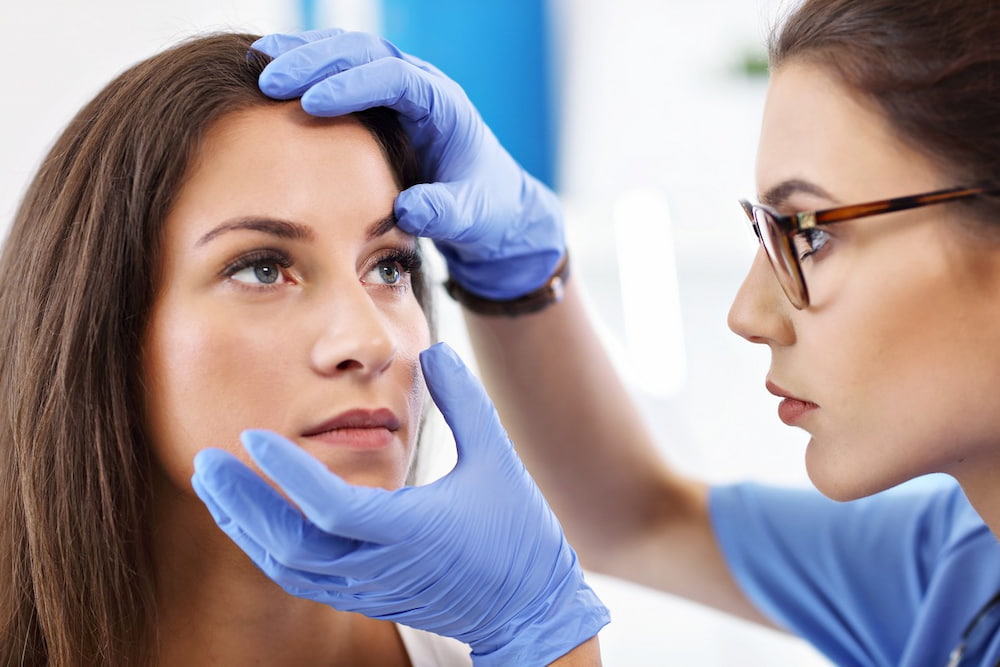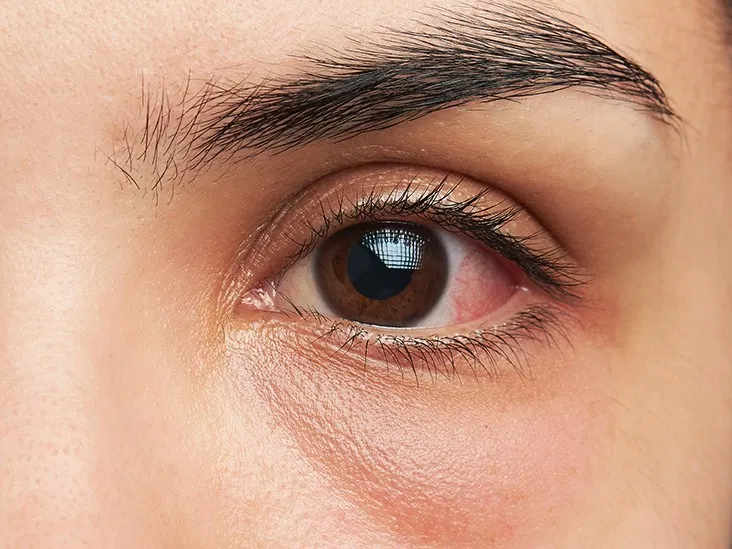Can You Wear Contacts With A Stye? Here’s The Answer

In general, wearing contacts while having a stye is not advised. When you have an infection in or near your eye, you should never wear contact lenses.
This is so that the infection won’t possibly get worse by spreading and contaminating the lenses. This is particularly true if the stye bursts because the infected fluid could be absorbed by the contact lens material.
If you don’t wear daily lenses, you should think about switching to a new pair of lenses as well as a new contact lens case once the infection has subsided.
For more specific information, keep reading.
Can You Wear Contacts With A Stye?
This is a good time to switch to your backup glasses while the infection heals if you have a sty and wear contact lenses. This is especially true if you have an internal sty.
A contact lens will likely rub against the sty and aggravate the area even more. This should be acceptable if you have an external sty and must wear your contacts. Wearing your contacts is not advised, though, if you want to be safe.
If you have any queries regarding the use of your contact lenses, speak with your ophthalmologist. Depending on the location and intensity of the infection, they can examine your eye and tell you whether or not you can wear contacts.
It’s crucial to discard your contacts after each use if you decide to wear them while your sty heals. If you keep using the same contacts after the initial infection has cleared up, you run the risk of reinfecting yourself.
What You Need To Know About Contact Lenses And Styes
If you wear contact lenses, you may wonder “If you have a stye, can you wear contacts?”. Styes are unpleasant to wake up with. Wearers of contact lenses, however, might face an even greater problem.
This article will discuss the causes and symptoms of styes, the distinction between styes and another condition similar to them called a chalazion, and the best course of treatment for a stye.
Key Points
- The painful eye infection known as a stye is brought on by clogged glands in the eyelids and eyelash follicles.
- Styes can spread if contact lenses are worn while they are infected.
- The symptoms of a stye should disappear in a few days with simple home treatment.
Taking The First Step
First, be aware that, while they can be uncomfortable, styes are typically not a threat to vision.
Styes usually disappear on their own. If the swelling of your eyelids impairs your vision, you may need to see an eye doctor (optometrist or ophthalmologist), though you can treat the symptoms at home.¹ Although some individuals are more prone to styes than others, you can take precautions as part of your daily eye care routine to prevent developing a stye.
It’s crucial to understand what a stye is, how it differs from a chalazion, and whether you should avoid wearing contact lenses if you have a stye.
Read about
Exactly What Is A Sty?
It’s most likely a sty if you see something in or around your eyelid that resembles a pimple. A sty can be internal or external and is also referred to as a hordeolum. Styes are extremely uncomfortable and can be slightly painful, particularly if they are inside your eyelid. Additionally, they lack beauty. The typical initial appearance of an external sty is a red pimple, but it may eventually turn yellow and begin to leak pus.
If you keep your eye clean, the majority of sties are harmless and will disappear in a few days. But a similar infection can be much more bothersome for people who wear contact lenses. Later on, we’ll talk about a few actions you must take.
Unless you’re in severe pain or the infection worsens while you’re treating it, a stye shouldn’t necessitate a visit to the eye doctor. If you believe there is a more serious problem because the eye is a sensitive organ, call your doctor right away.

Common Causes Of Styes
Oil gland blockage is the most frequent cause of styes. These are known as meibomian glands, and they aid in lubricating the eyes.
Makeup or bad hygiene may cause a blocked gland. Styes can also develop as a result of a poor diet, insufficient sleep, and excessive eye rubbing. Styes can be caused by a number of inflammatory diseases and conditions. These ailments include dermatitis, rosacea, and diabetes.
Bacterial transmission can also cause you to develop a sty. If you rub your eye just after rubbing your nose, this could happen. A washcloth, pillowcase, or sharing cosmetic products are other possible sources of infection. Staphylococcal, or staph, bacteria are the culprits behind them. Don’t let this scare you, though. Styes are not harmful unless they are neglected, whereas staph infections are frequently dangerous.
Symptoms
Redness, inflammation, and sores are symptoms of numerous eye conditions. How can you tell if you are dealing with a sty, then?
Other signs include itching or the impression that something is in your eye. Additionally, the infection’s surrounding area may feel slightly compressed. When you touch the outside of your eye, there will be a slight amount of sensitivity. Even light sensitivity could be a problem.
An increase in the amount of tears coming from the infected eye is another warning sign. Your tear ducts respond to the pimple in a similar way to how they respond to dirt in your eyes, which causes this to occur. On your eyelid, you might also detect an accumulation of dried, crusty material. Pus may start to come out of the pimple if you have an external stye. To stop the spread of infection, it’s critical that you clean this.
Proper Eye Care
The majority of sties, as we previously stated, will disappear on their own in a few days. The infection must still be treated, so you must still take action. Ignoring it may make it worse and cause the sty to last longer.
Put a clean washcloth over your eye and cover it with warm water as soon as you notice the sty. For a period of ten minutes, leave the washcloth in place. This will aid in removing any pus and lessen inflammation. A crust that has developed along your eyelid must also be washed off. To keep your eye as clean as possible is a good general rule.
To bring the sty to a head, you’ll need to keep applying a warm washcloth. Do not attempt to pop the sty like a typical pimple, even if you are tempted to. Infections must naturally recover from themselves. Give it time.
Preventive Measures
Following the removal of a sty, there are some steps you can take to prevent its recurrence. However, it’s crucial to remember that no preventive measure is 100 percent successful.
One of the best ways to avoid a sty is to maintain a clean face. You must wash your face every day and take off your makeup before bed if you wear it. Your oil glands won’t become clogged as a result of this. Eyelid wipes that help kill the bacteria that cause infections are available in stores. Use these if you frequently experience dry eyes or flaky skin.
Utilizing good contact lens hygiene is a further crucial step. Make sure to clean your lenses every night if you don’t wear daily disposables. And never put on outdated or damaged contacts.
If I Have A Stye, Should I Avoid Contact Lenses?
It is best to refrain from wearing contact lenses until your eyelid has healed because styes are an infection. You shouldn’t wear them, whether you wear rigid gas permeable lenses (hard) or soft lenses (daily disposables or extended wear lenses—soft).³
It is best to start over with a new pair of soft lenses once your infection has cleared up rather than keeping your current set. Make sure to thoroughly clean hard contact lenses with a cleaning solution and disinfect your case.
Even if you only have a chalazion, you might find that avoiding contacts is more comfortable, but it is still okay to wear them while you have one.
Final Words
If you wear contacts, there’s a good chance you take precautions to keep your eyes and lenses as pristine as possible. Sadly, no matter how much care you take with your eyes, some infections are unavoidable.
An issue with a sty is very typical. This is a minor infection on the inside or outside of your eye. Despite the fact that the majority of styes are completely safe, it’s crucial to start treating the condition right away. Your contact lenses might be required for these steps.
Thank you for reading.